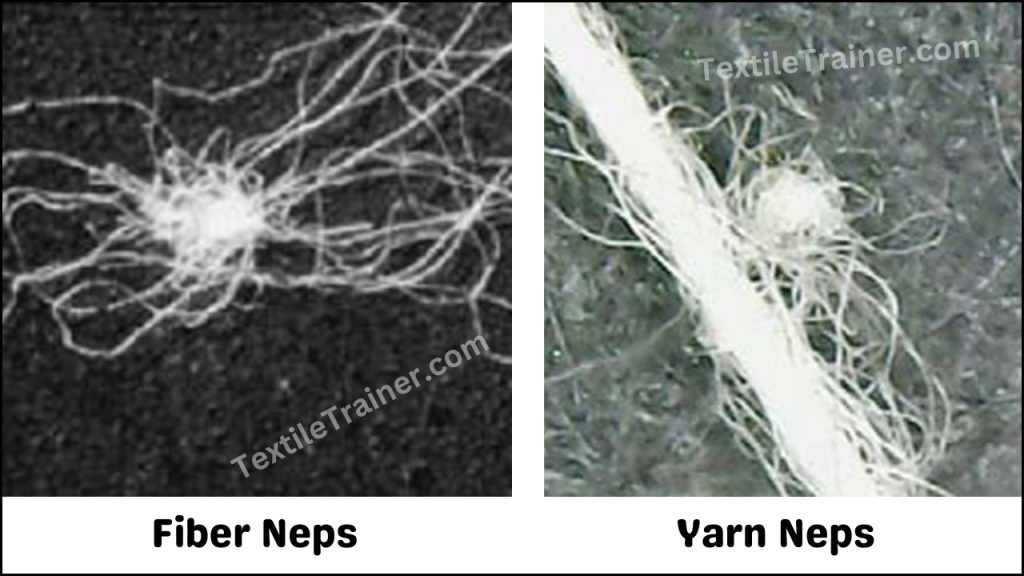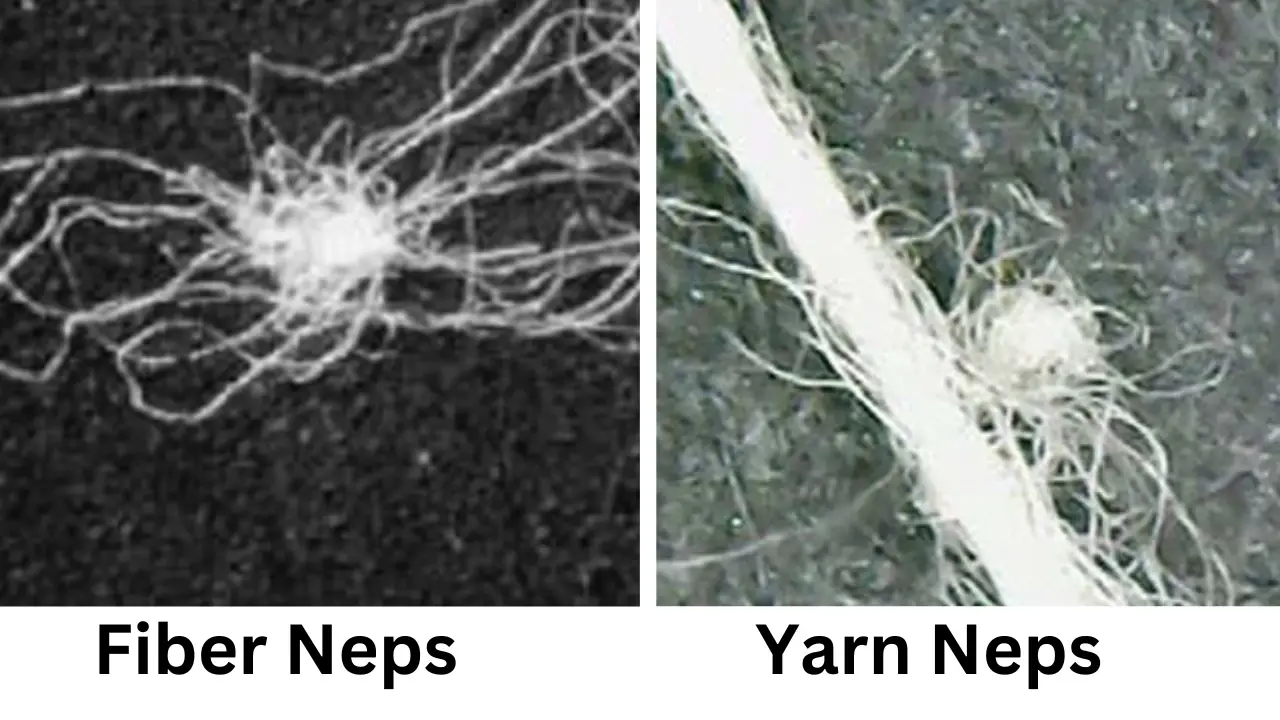What is Neps?
Neps in carding create various problem in spinning. Nep typically refers to “Neps”. The term “NEP” usually refers to small, tangled fiber clumps in spun yarn. They can negatively affect yarn quality and appearance. There are several factors that can contribute to these problems during the spinning process, including fiber type and preparation, spinning technique, and spinning equipment condition.
Textile terms and definitions define a ‘Nep’ as “a small knot of entangled fibers that usually comprises dead or immature fibers”. According to ASTM definition, “A nep is one or more fibers occurring in a tangled and unorganized mass’
Because the finer diameter ratio contributes to high-quality fabrics, neps are generally more sensible with finer count yarns and high-quality yarns than coarser yarns. As cotton plants grow, there are zero neps in the flock. Generally, neps appear during mechanical openings and cleaning processes, such as ginning, when cotton fibers are cleaned. In addition to removing dirt, husks, and trash particles from the opened mass, the card should also remove the neps.
Classification of Neps:
According to definition of Neps
- Fiber Neps: Fiber neps can be defined as small knots of entangled fibers, consisting either entirely of fibers or foreign matter (e.g. a seed coat fragment) entangled with fibers. In addition to containing trash or seeds, entangled fibers typically have a diameter of 0.3 to 3 mm.
- Yarn neps: Small yam neps are approximately 1 to 4 millimeters in length with a mass around twice that of an average yarn. In ring-spun yarns (carded or combed), the sensitivity setting is +200%. For open-ended yams (rotors), the sensitivity setting is +280%.

Neps have been divided into two basic groups by various authors:
- Biological Neps: When neps contains foreign materials, such as seeds, leaves, and grit, yet has fibers attached then it is called biological neps. The biological neps in cotton lint are usually associated with mal-formed seeds, unfertilized ovules, and dead seeds, whereas the biological neps in cotton lint are more likely to contain seed-coal fragments.
- Process/Mechanical Neps: The neps that are mainly composed mainly of fiber entanglement and have their origin in the manipulation of fibers during processing are called mechanical neps. The AFIS-N has a higher peak sensitivity value for biological/raw neps because they have a higher mass on average than process/mechanical neps.
Reasons of Neps in Carding:
- Aspect Ratio: Carding longer fibers has a greater tendency to form neps, because longer fibers are more likely to be broken and recoil than those of shorter length, causing the fiber to end up entangled in the neps.
- Fiber Fineness: Fiber fineness is also responsible for neps. As we know, fine fiber is much thinner and lighter in weight than coarse fiber. So that, it is easier for it to be entangled to form neps . On the other hand, as it is more flexible to be entangled into neps due to its fine diameter.
- Degree of Buckling: There are a number of physical and mechanical properties of fiber which, when combined, are able to determine the degree of nepping of the fiber.
- Crimp Level: Another most important reason for neps is crime level. The higher the crimp level in fiber, the greater the degree of nepping in the fiber, and vice versa.
- Impurity Content: The degree of nepping is not strictly determined by fiber properties, but by grade. The higher the level of impurities in fiber mass, the more likely it is to occur as a result of processing disturbances.
- Co-efficient of Friction: There is no doubt that frictional characteristics would influence the formation of neps in carding.
You may read:
- Objectives and basic function of carding machine.
- Working principle of carding machine.
- Why carding is called heart of spinning?
- Operating zone of carding machine.
Reference:
- Belal, P. D. (2016). Understanding Textiles for a Merchandiser. Dhaka: LB Graphics & Printing.
- Chowdhury, M. F. (2016). Manual of short staple spinning. Dhaka: Granthanir Prokashoni.
- Corbman, B. P. (1987). Textile Fiber to Fabric. Singapore: McGraw Hill Book Co.
- Prof. Dr. Engr. Ayub Nabi Khan, E. M. (2088). Principles of short staple spinning. Dhaka: Books Fair.







5 thoughts on “Best 6 Reasons of Neps in Carding with Classification of Neps”